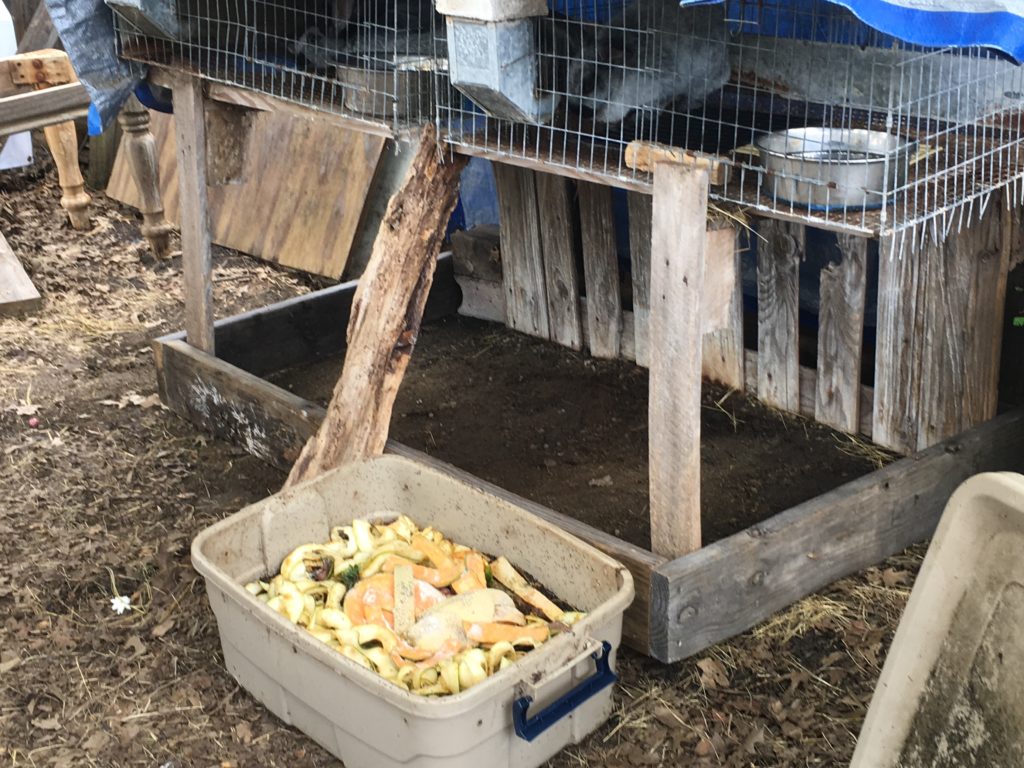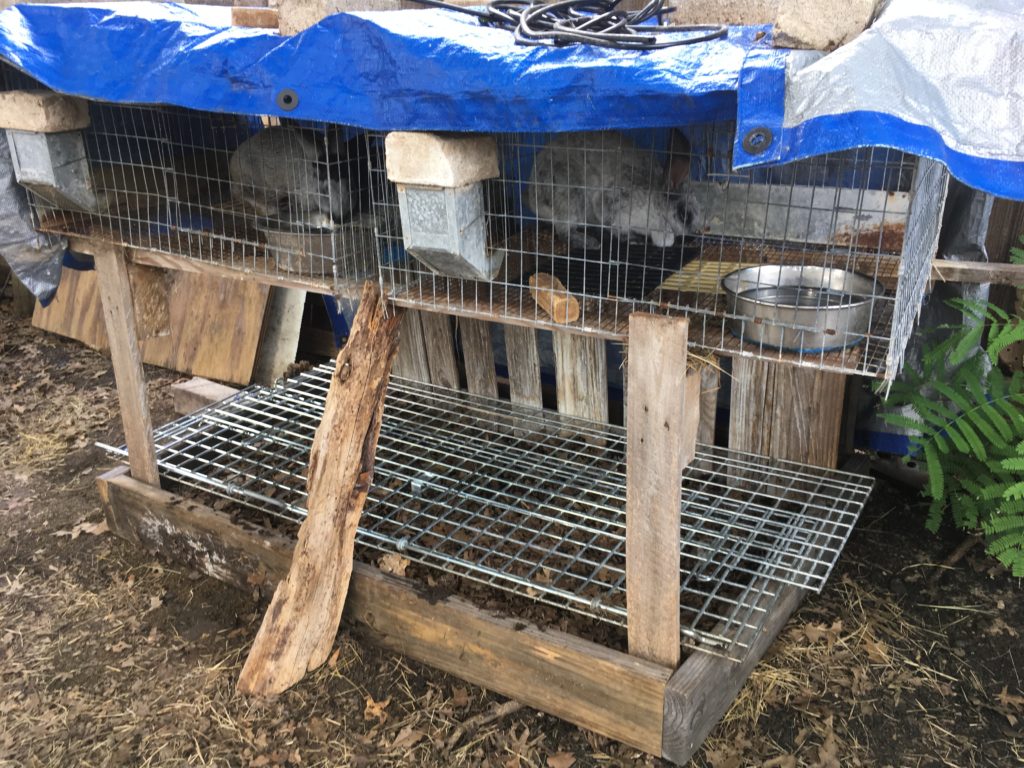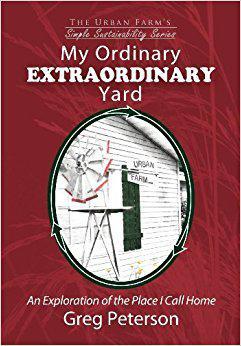One Year of Vermicomposting:
Updates and Things to Watch Out For
By Anne-Marie Miller
Editor’s Note: This is the third article in Anne-Marie’s vermicomposting saga. Read the first article, Black Gold for the Garden, here, and read the second article, Harvesting Black Gold, here. About a year ago, I invited some wonderful wriggly guests into my house. These slimy guests were going to work for me while I slept. The rules were simple: They would stay in their part of the house, the vermicomposting bin, and eat the veggie scraps I threw their way. In turn, they would produce black gold for my garden. I had heard amazing things about this stuff and was so excited to see it work wonders in my garden.
About a year ago, I invited some wonderful wriggly guests into my house. These slimy guests were going to work for me while I slept. The rules were simple: They would stay in their part of the house, the vermicomposting bin, and eat the veggie scraps I threw their way. In turn, they would produce black gold for my garden. I had heard amazing things about this stuff and was so excited to see it work wonders in my garden.
Here is what Heather from the Texas Worm Ranch had to say about earth worm castings aka “black gold:”
“While there are nutrients in worm castings, the real benefit to these castings are the millions of beneficial microbes that are present in them. Those microbes eat organic matter in your soil and release plant available nutrients. Fungi in the castings form symbiotic relationships to transport water and nutrients to the roots. Fungi can hold water in the soil and help with water management. Worm castings will have at least 10 times more microbes than soil or regular compost.”
After using this nutrient-rich material in my garden for a year, I can testify that everything they say about it is true. It is amazing stuff! I have fewer pest problems than I have had in previous years. My plants seem strong enough to withstand the onslaught of squash bugs, spider mites and aphids long enough for the beneficial insects to show up or for me to assist enough to turn the tide in our favor. (The squash vine borer still eats my lunch, but that is a whole other story.)
My house guests were earning their keep until the day that the invaders came and ruined the whole arrangement. It happened on a normal run-of-the-mill Saturday morning. My hubby and I were sharing conversation over a cup of coffee when a small insect floated across my vision. I swatted and waved each time it hovered around my head. My husband, unable to see the tiny nuisance at all, got that concerned look in his eye that he gets from time to time. After a few minutes, the little bug floated his way and it was my turn to have a chuckle at his arm waving antics. However, it was the gnat that ended up having the last laugh, because he apparently went straight home to the lovely environment of the vermicomposting bin that I had created for him and multiplied and multiplied and multiplied. In a matter of a few weeks, there were gnats everywhere. Needless to say, my family rather strongly insisted that the worms would have to move their residence outside. Not wanting my helpful worms to perish in the cold or heat, I tried a drench of Bt to no avail. So, outside they went. I set up their new residence under a rabbit hutch in a deeply shaded spot. I wondered if the rabbit pellets and particularly the urine would overcome my helpful friends, but they seemed to be right at home in it.
I set up their new residence under a rabbit hutch in a deeply shaded spot. I wondered if the rabbit pellets and particularly the urine would overcome my helpful friends, but they seemed to be right at home in it.
The new vermicomposting area is closed in on all sides by 6-inch-wide scrap boards held together by screws in the corners. Because I have hungry chickens that would relentlessly go after a free lunch once they located it in the yard, I had to cover the bin with something that would keep the chickens out and still allow the rabbit pellets to fall through. When my friends come across some unusual looking building material that they have no use for, they naturally bring it to me. I don’t quite know what to think about that, but the metal grating that a friend brought me worked very nicely for this purpose.
I wondered if the worms would leave? I am happy to report that they are very content to stay put. Of course, they love melon season and the rinds that come their way.
It is important to note here that vermicomposting worms are not the deep diggers you dig for fishing. They are red wrigglers, which is a type of earth worm designed to stay up in the first few inches of the forest floor.
One advantage to this setup is that it is much easier to harvest the castings. Previously, about every 8 weeks I had to dump the bin out onto a mesh sifter to separate out the black gold for my garden. I was getting my lifting and sifting exercise in for sure! Now, I just put a big batch of veggie scraps on one side of the bin and they migrate over to see what is for lunch that day. Then, I just scoop everything out from the other side of the bin. Sure, I get a few worms in the mix, but I am sure my garden appreciates that as well.
Whether they can make it through the first winter or not has yet to be seen. I live in a mild winter weather climate so I have high hopes that my worms will prevail. If you live in a place with hard and long winters, you might consider keeping them in a greenhouse. A friend of mine keeps his vermicomposting bin, with rabbits and all, in a small greenhouse that he built and they have been doing beautifully.
I wanted to give those of you whom I have encouraged to keep a composting bin indoors a heads up about the silent invaders that, despite our best cleaning vigilance, still live among us! I have come to despise gnats!
If you have successfully kept a vermicomposting bin indoors for over a year without the presence of tagalong pests, please let us know your secret in the comments. Anne-Marie or Dash (for the hyphen in her name) is an urban farmer in Dallas, Texas. She raises chickens and rabbits on less than ¼ of an acre. Plus, she has turned her front yard into a large stand-out-in-the neighborhood vegetable garden. In addition to the farming she does on her homestead, she helped create a community garden literally from grassy field to thriving garden. What stands out about her little urban homestead is her determined out of the box approach to overcoming obstacles. You can follow her adventures on her little urban homestead by visiting her blog: BloomWhereYourPlanted.com.
Anne-Marie or Dash (for the hyphen in her name) is an urban farmer in Dallas, Texas. She raises chickens and rabbits on less than ¼ of an acre. Plus, she has turned her front yard into a large stand-out-in-the neighborhood vegetable garden. In addition to the farming she does on her homestead, she helped create a community garden literally from grassy field to thriving garden. What stands out about her little urban homestead is her determined out of the box approach to overcoming obstacles. You can follow her adventures on her little urban homestead by visiting her blog: BloomWhereYourPlanted.com.







Anne,
I am by no means an expert and I have only had a small indoor worm farm for the last 6 months, but I read a book by Liz with Big-Tex worms that talked about the importance of keeping a layer of dry newspaper clippings on top – especially to cover up vegetable & fruit scraps to keep the flying creatures away.
The experience you had sounds like what we endured with our indoor seedling set-up and fungus gnats that must have left eggs in the compost we used in our seedling. They didn’t bite, but until we turned our Taotronics bug zapper back on they were pretty annoying. What I have read is that they breed in over-moist soil, so Derek’s advice will help. Our zapper has a collection tray at the bottom, and we tip the crispy critters in it onto our chicken feed